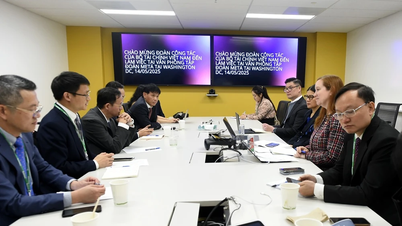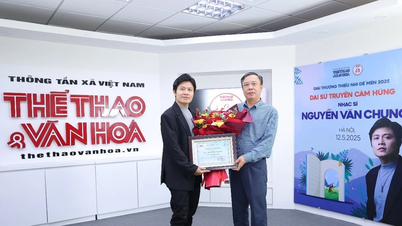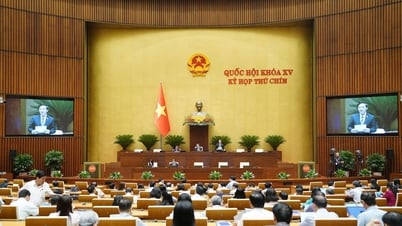Upgrade technology, restructure expenses
According to the decisions of the Ministry of Industry and Trade and the Vietnam Electricity Group (EVN), the average electricity price has increased by 4.8%. This price increase is in the context of the constantly escalating input costs of the electricity industry. However, according to many economic experts, the impact of this price adjustment does not stop at the economic aspect but also creates pressure to change people's electricity usage behavior and the way businesses operate. For the manufacturing sector, the increase in electricity price is a push to review the entire operating process. Many businesses have immediately proactively restructured their expenses, calculating more carefully each stage of electricity consumption.
According to Mr. Tran Dai Nghia, Deputy General Director of Lam Thao Superphosphate and Chemical Joint Stock Company, on average, the company consumes 3.7 million kWh per month. With an increase of 4.8%, the production cost increases by about 4 billion VND per year, with the strongest impact on the high-content NPK product group. This forces the company to promote the application of energy-saving technology, such as implementing the ISO 50001:2018 system, digitizing energy management through PMS software, installing three-phase inverters, replacing high-efficiency motors and energy-saving LED lighting. Similarly, according to Mr. Nguyen Van Ket, Director of SKD Vietnam Precision Mechanical Company, electricity prices account for about 20%-30% of product costs, so the company proactively upgrades technology and improves production lines to optimize efficiency.
Price transparency and price control
Associate Professor, Dr. Ngo Tri Long, former Deputy Director of the Institute for Price Market Research (Ministry of Finance), assessed that the adjustment of electricity prices is reasonable when viewed in the context of the overall market. However, the electricity industry should strongly reform internally, reduce regular costs, optimize system operation, and increase the proportion of mobilization from low-cost electricity sources. In particular, it is necessary to publicize detailed production costs of each type (hydropower, coal-fired thermal power, gas, renewable energy, etc.) for people to monitor. Soon deploy a roadmap for a competitive electricity market (wholesale and retail) to limit monopoly, make prices transparent, and stimulate social investment in clean energy.
According to Dr. Nguyen Tien Thoa, Chairman of the Vietnam Valuation Association, if there are no strict control measures, the increase in electricity prices will be an excuse for many products to "follow the trend". Therefore, it is recommended that management agencies take drastic measures and require businesses to list transparent prices before and after the adjustment period. For the group of goods and services whose prices are set by the State, it is not allowed to adjust beyond the increase in electricity costs. For other sectors, there must be strict supervision and strict handling of unreasonable price increases.
It can be said that increasing electricity prices is an inevitable trend when input cost pressure is increasing, Vietnam must gradually integrate more deeply into the global energy market. However, this adjustment must be accompanied by conditions of strict, transparent and fair price management. Enterprises see this as an opportunity to reinvest in energy saving and technology conversion, while the State closely monitors the market, protects consumer rights as well as accelerates the competitive electricity market and national sustainable energy strategy.
Source: https://www.sggp.org.vn/gia-dien-tang-doanh-nghiep-tim-cach-thich-ung-post795133.html



![[Photo] Prime Minister Pham Minh Chinh chairs conference on anti-smuggling, trade fraud, and counterfeit goods](https://vphoto.vietnam.vn/thumb/1200x675/vietnam/resource/IMAGE/2025/5/14/6cd67667e99e4248b7d4f587fd21e37c)




























































































Comment (0)